Aurlandsdalen–Østerbø to Vassbygdi (Aurland, Norway)
Aurlandsdalen is a scenic valley that stretches through Nærøyfjord, one of Norway’s many UNESCO World Heritage Sites. With 50km+ of continuous hiking trails, the valley features stunning views of the surrounding mountains, lakes, and farmhouses.
Overview:
Distance: 10.89 miles (17.53 kilometers)
Elevation gain: 1,139 feet (347 meters)
Route type: Point-to-point
AllTrails: link
For the two days leading up to the hike we stayed on the outskirts of the nearby town of Flåm. Flåm is a sleepy town that sits on the southern tip of the Aurlandsfjord. Once per day, a Norwegian Cruise Liner descends upon the harbor and the town swells with tourists, who mainly visit to ride the scenic Flåmsbana, a 20-kilometer long rail line that takes passengers on a winding stretch through the neighboring mountains. We chose to skip the $60 train ride and went for a short hike up to Brekkefossen waterfall on the southern edge of the city. Regardless of what you choose to do, it’s worth grabbing a beer at Ægir Brewing and enjoying the views of the surrounding mountains from the waterfront.
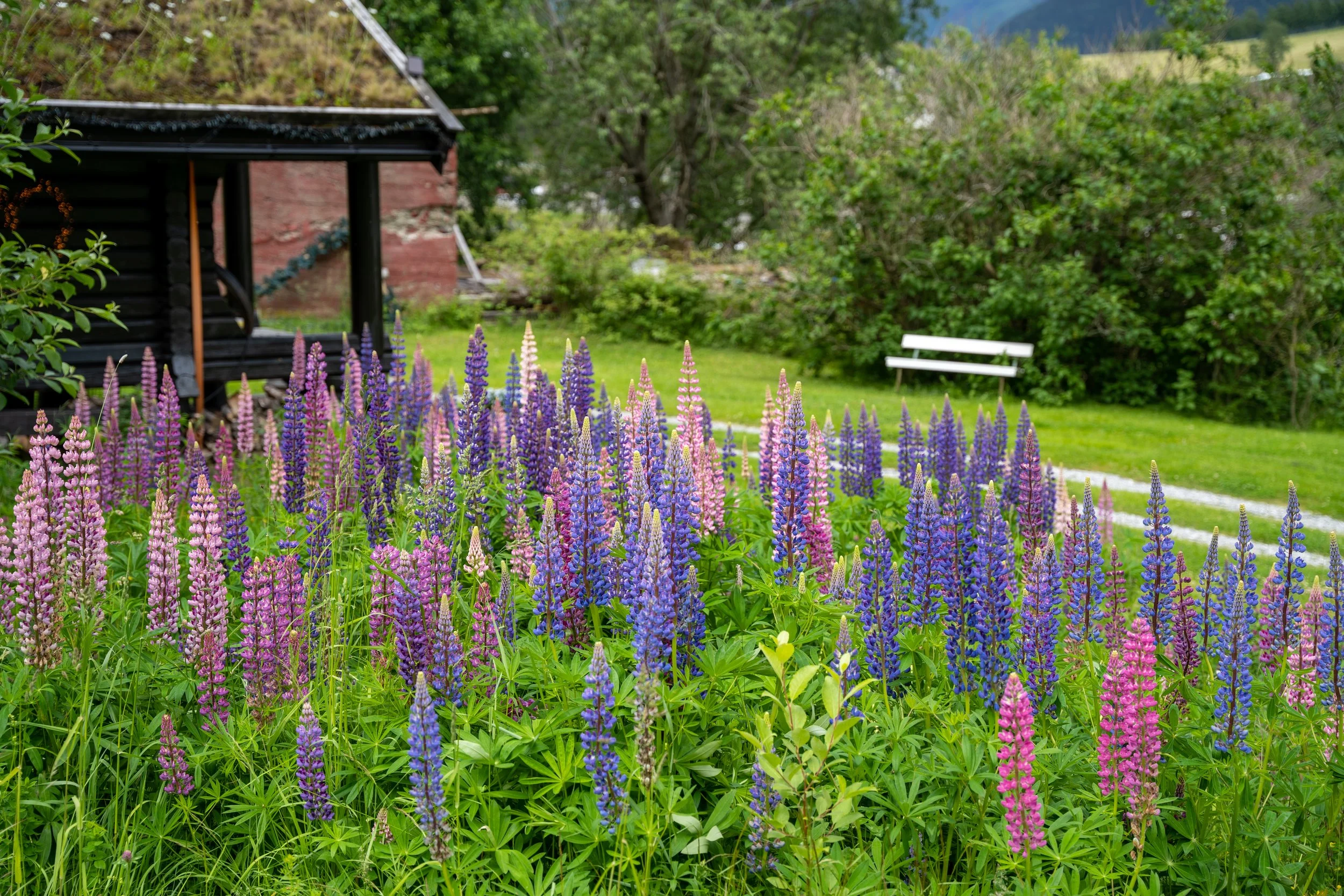
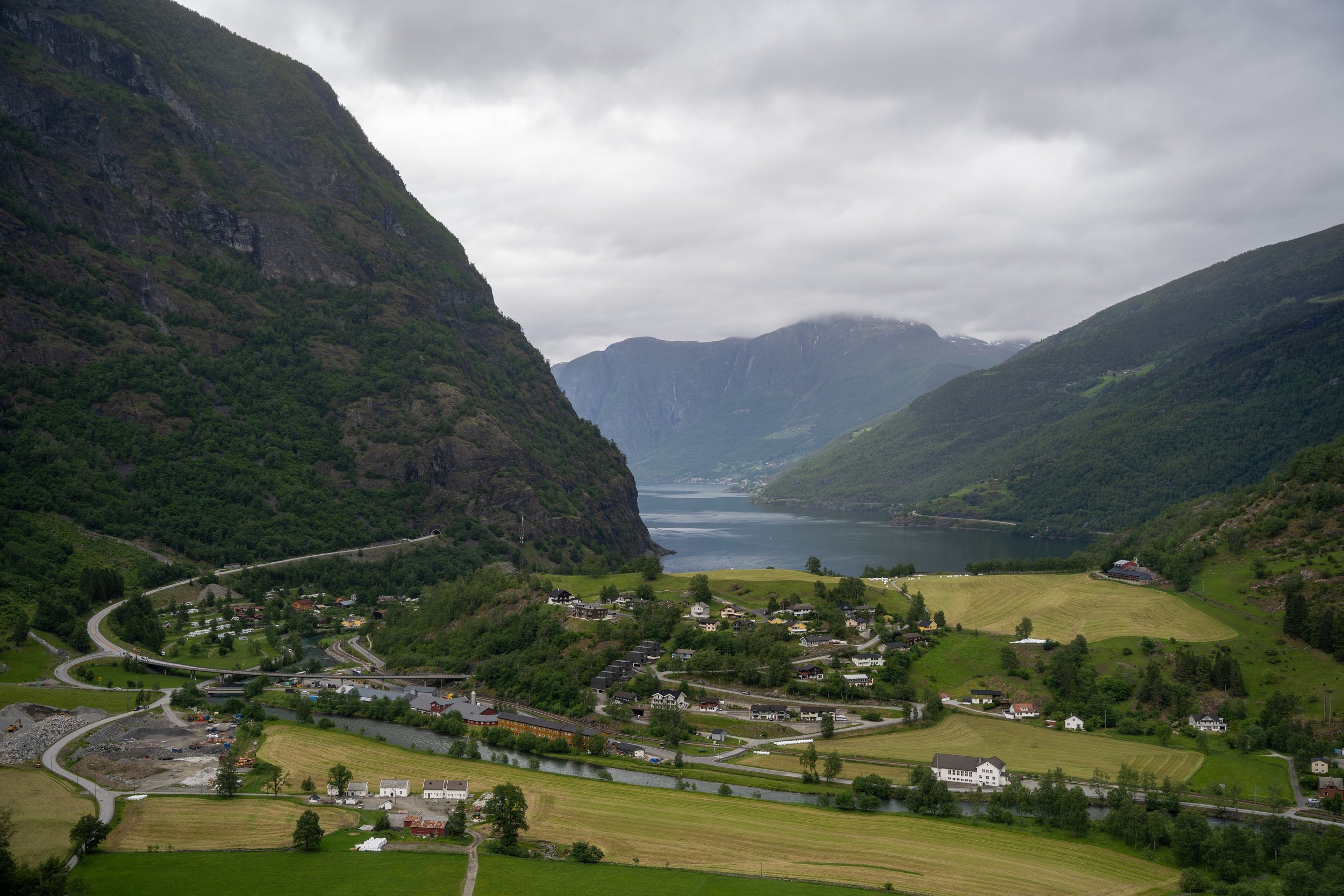
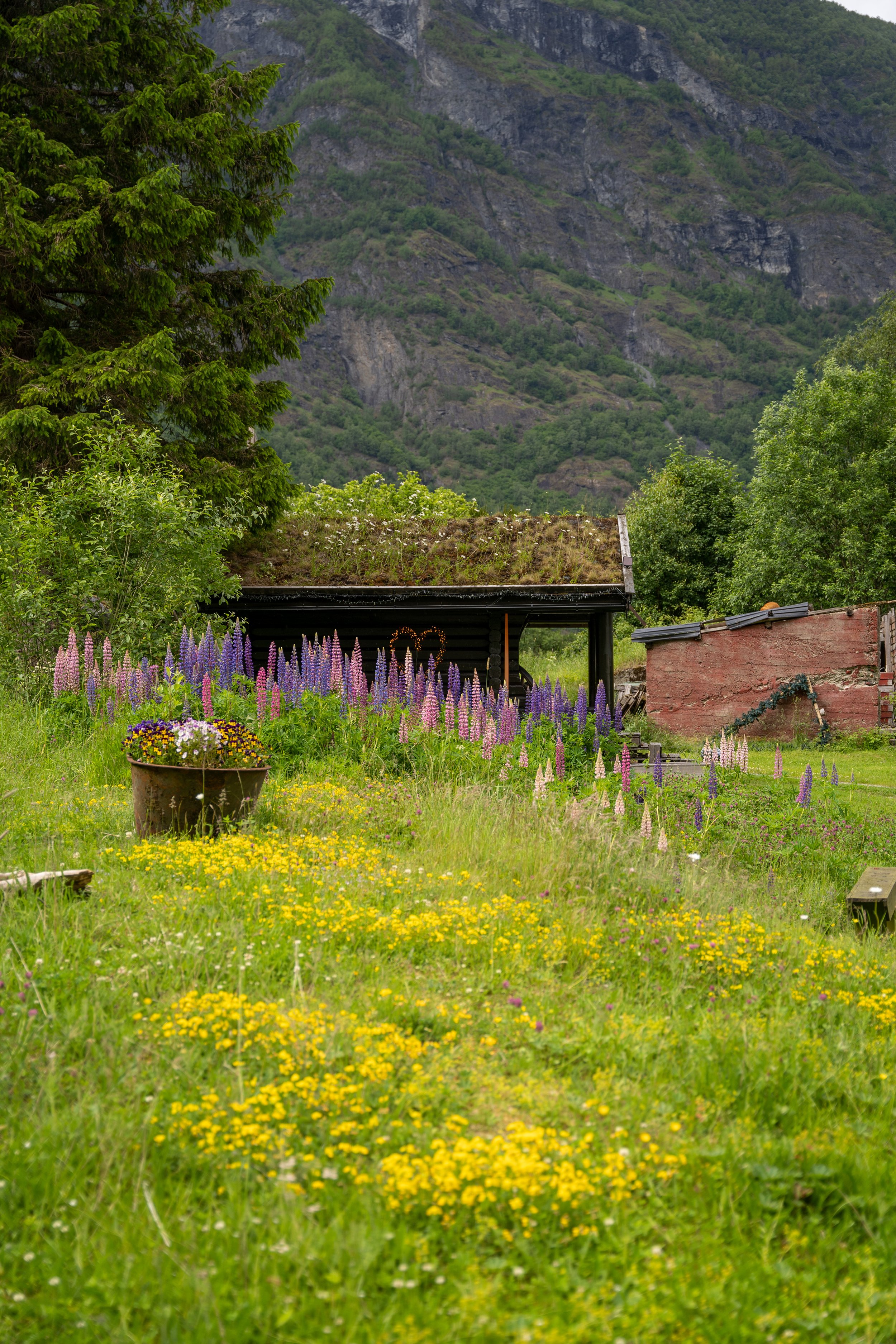
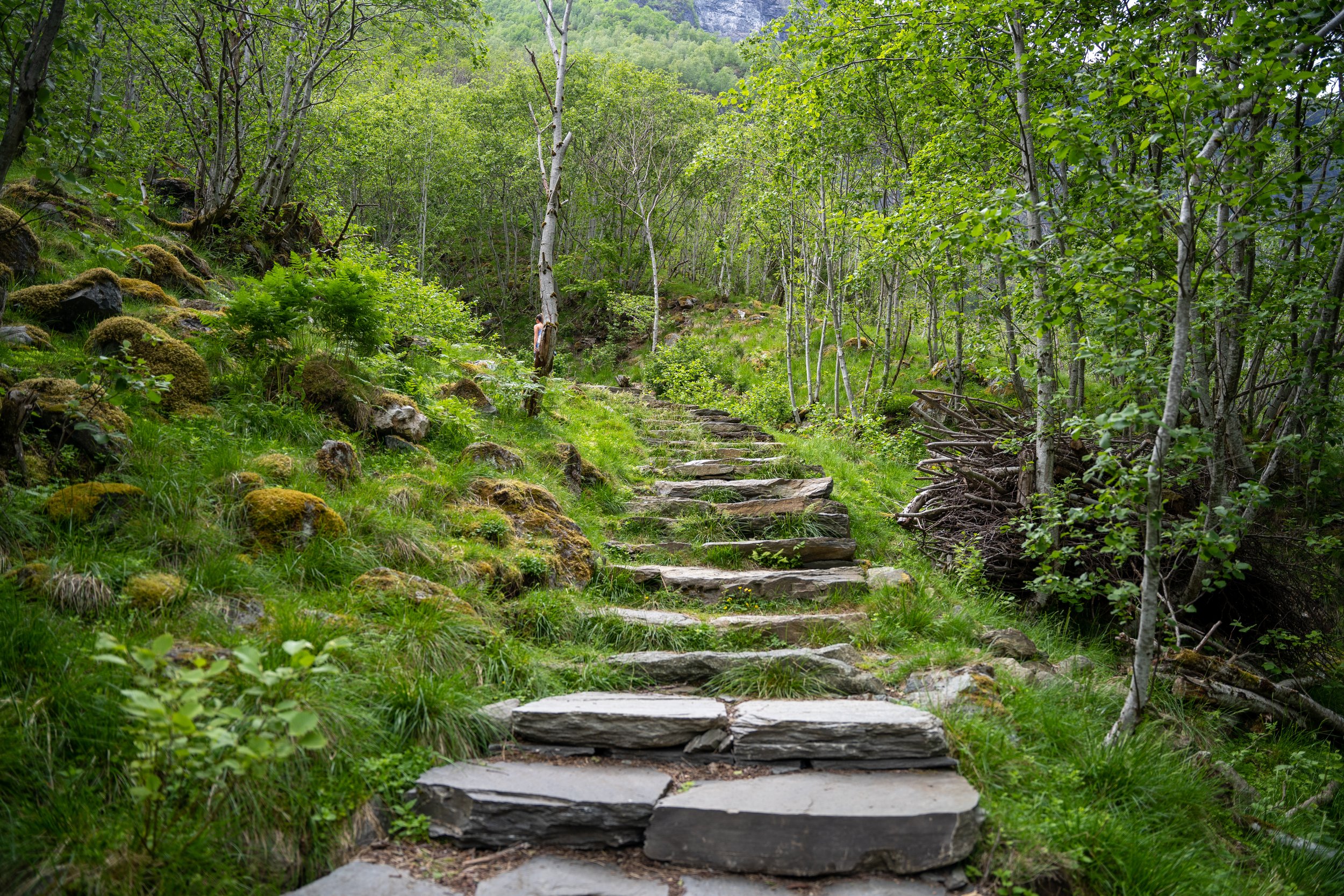
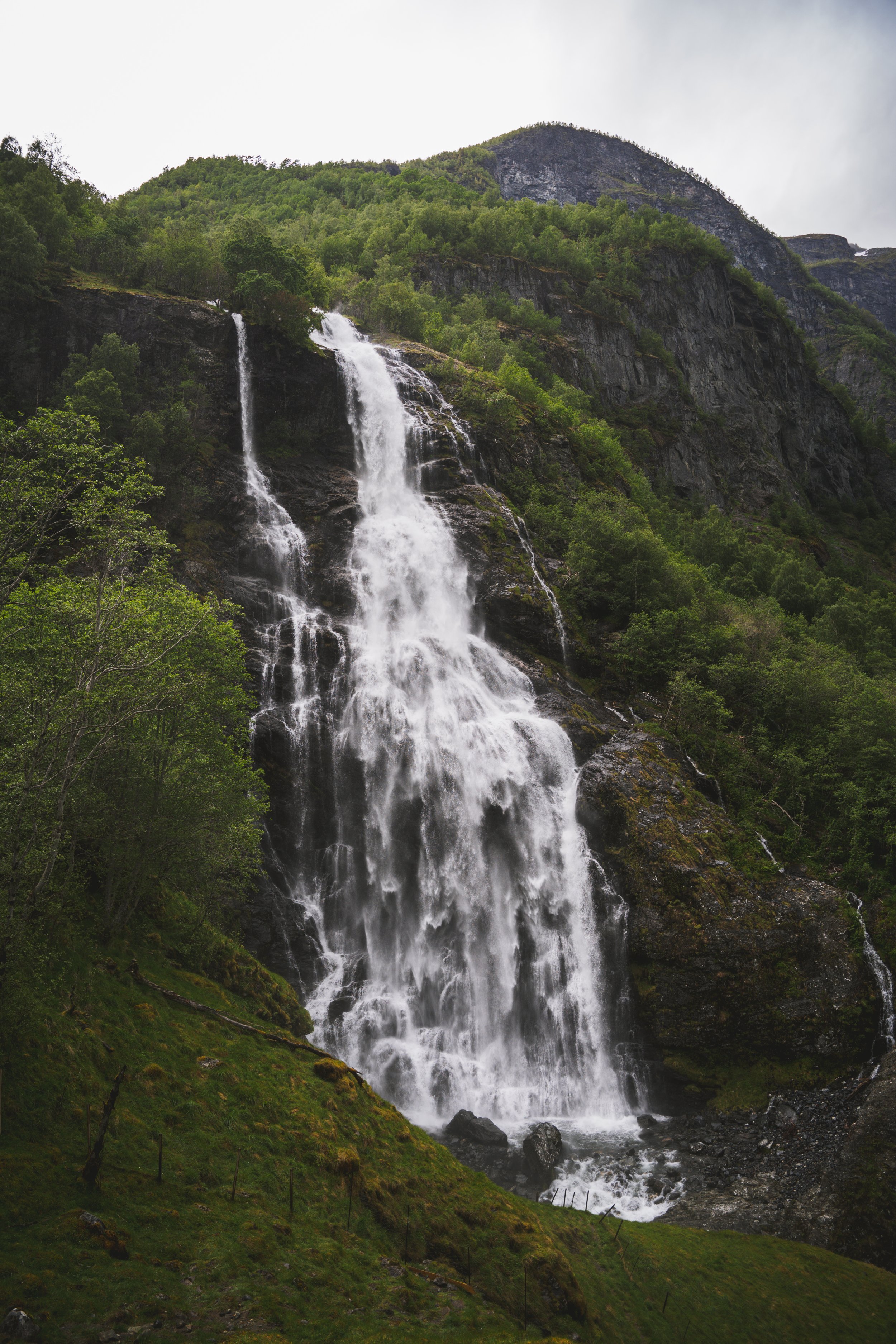
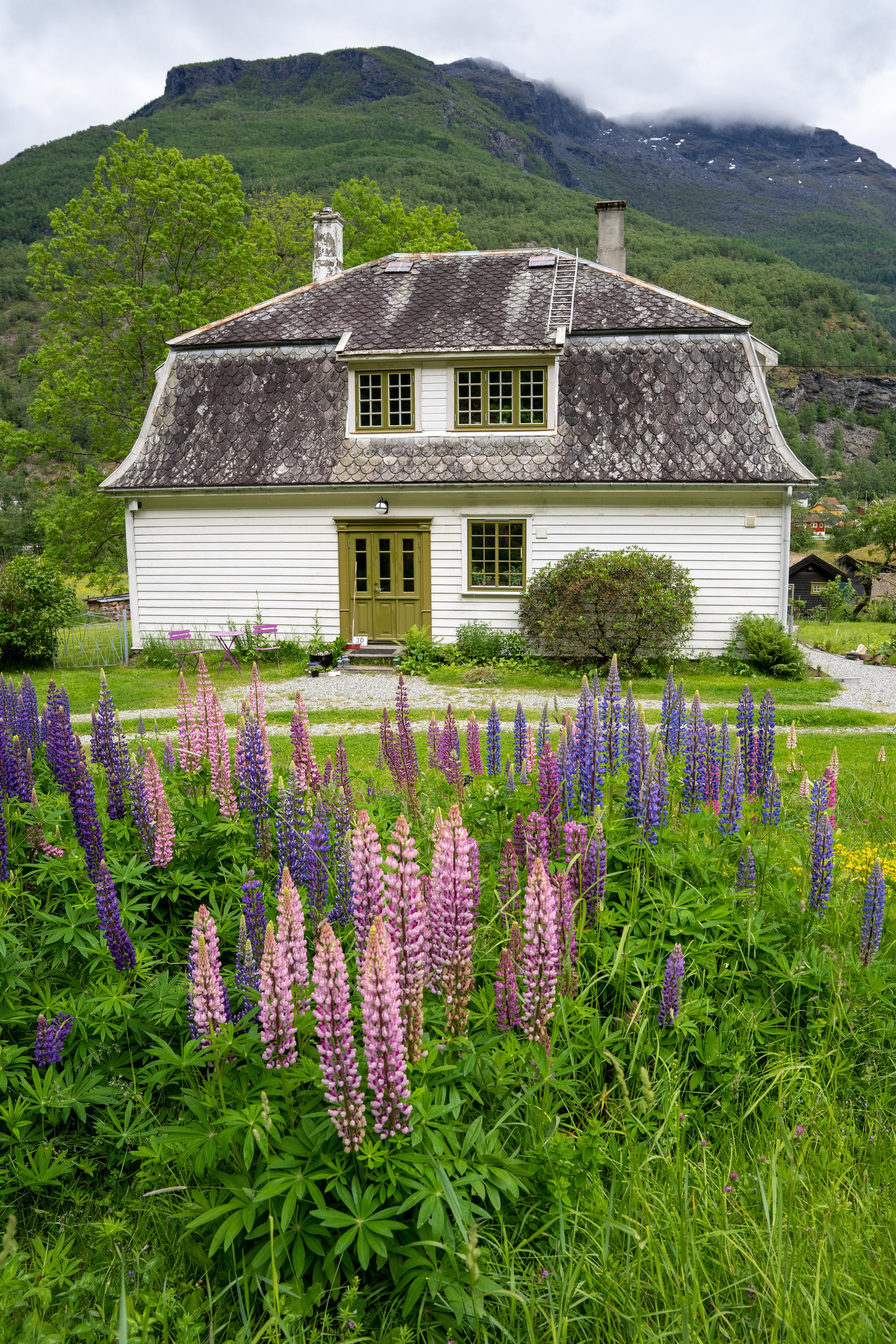
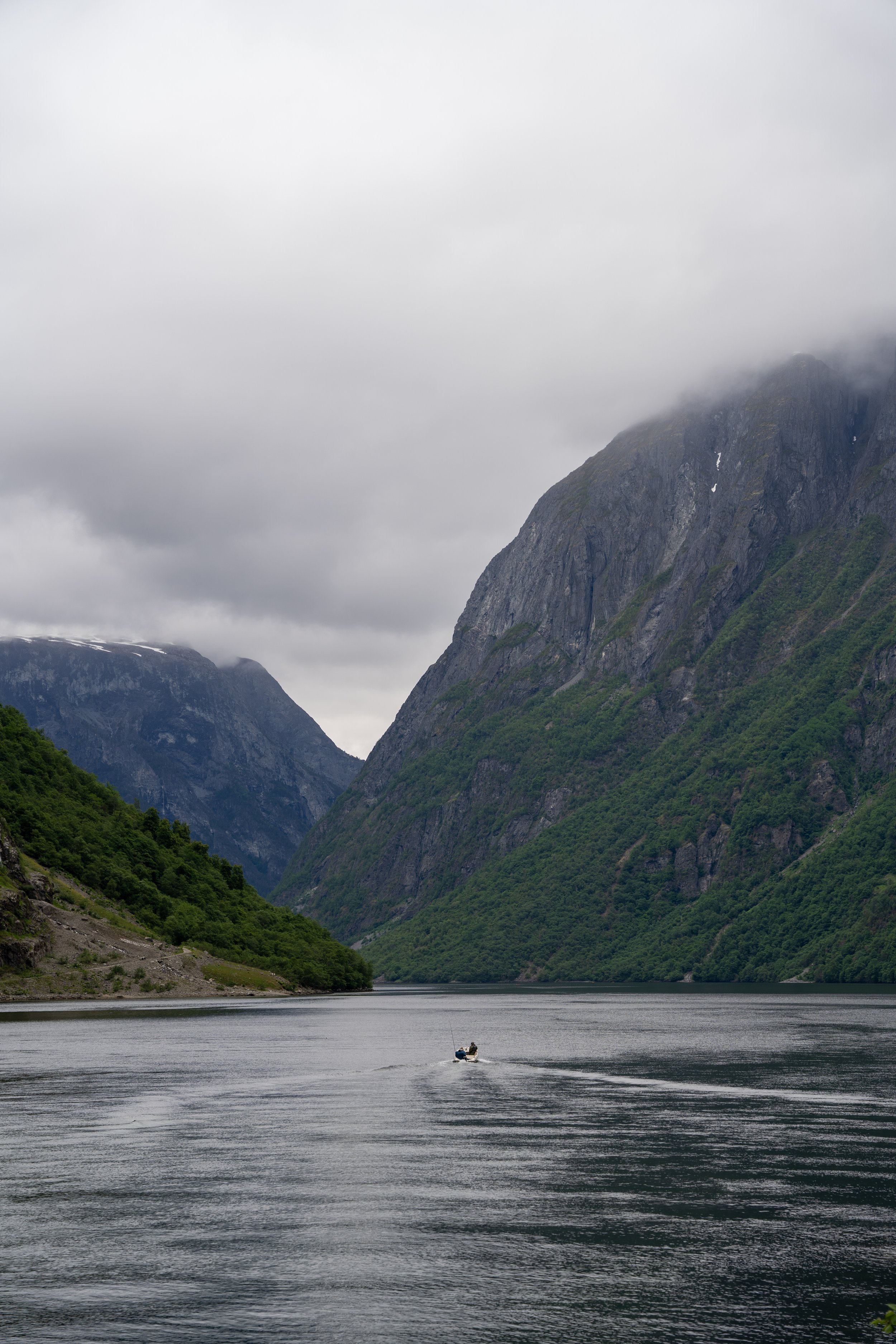
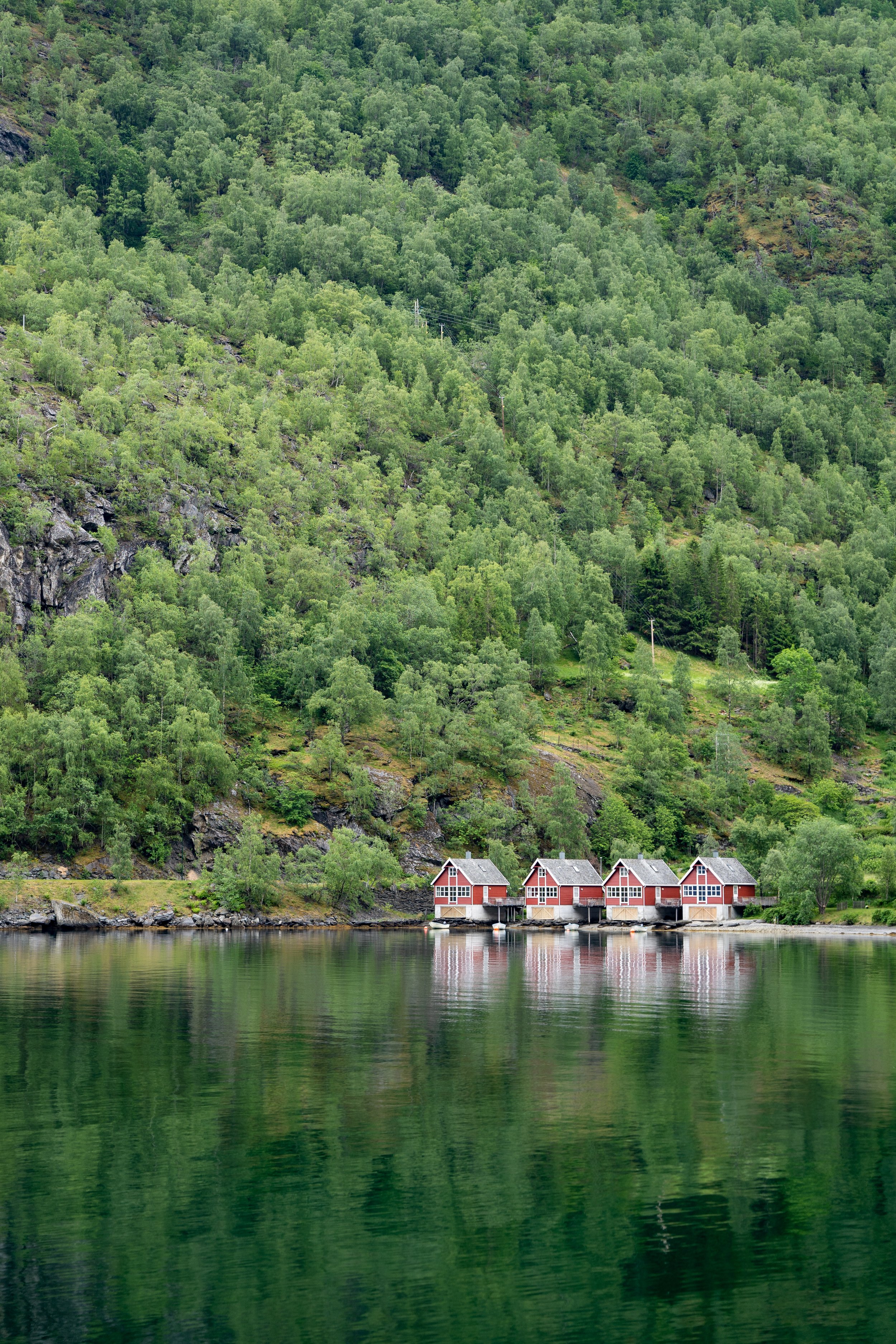
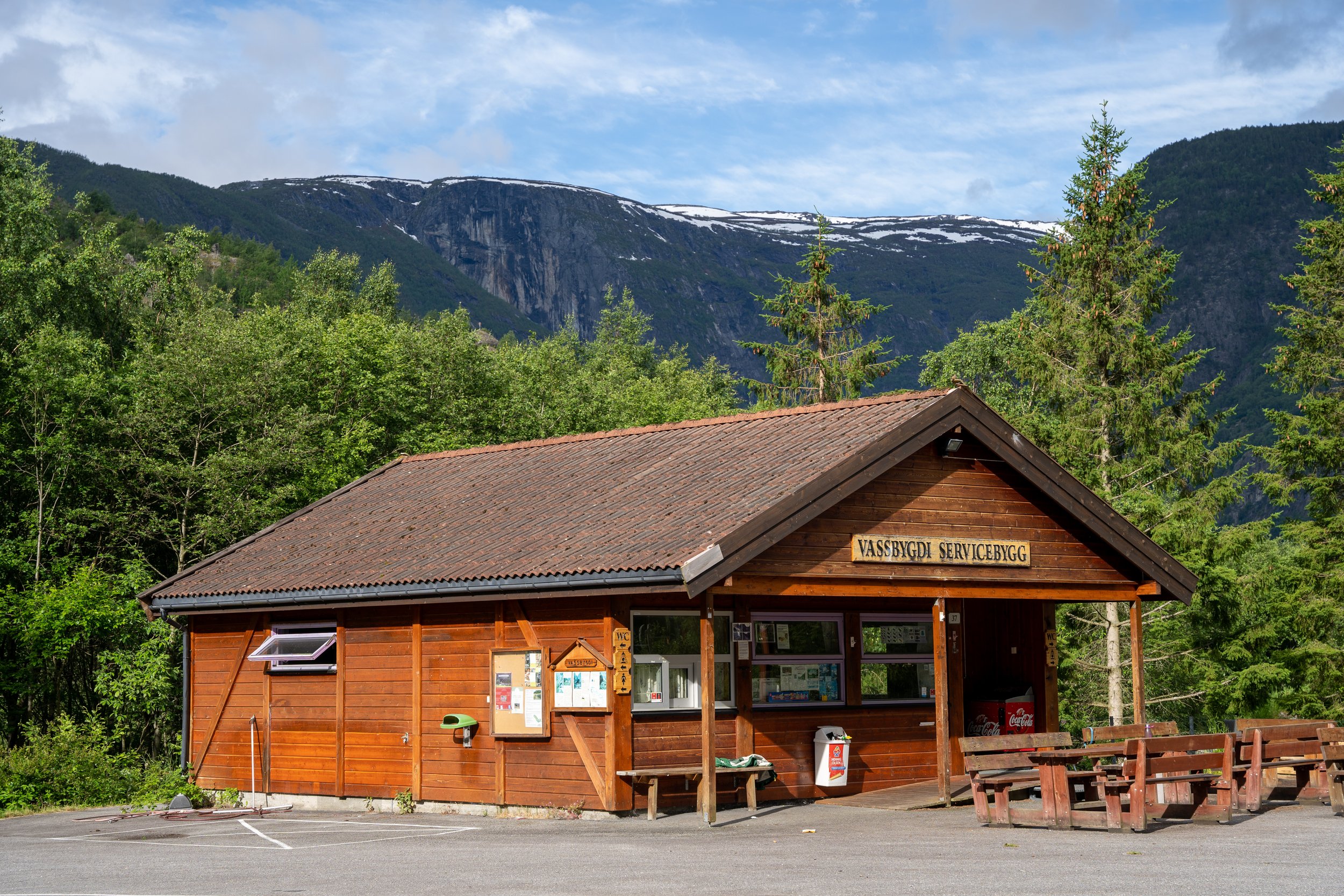
On the day of the hike, we drove 20 minutes from Flåm to Vassbygdi, parked our car at the bus station, and took a local bus to the start of the trailhead in Østerbø. You can alternatively do the hike in reverse, driving to Østerbø and taking the bus to Vassbygdi. But because Vassbygdi is closer to Flåm, it’s more efficient to to bus from Vassbygdi. Østerbø sits a few thousand feet higher in elevation, so doing the hike in this direction also results in a gentle downhill experience. The bus dropped us off in the middle of a collection of wooden cabins and small red houses, characteristic of the Norwegian countryside. The trail, which begins directly from the bus stop, cuts through green pastures before reaching the banks of Aurdalsvatnet lake. From there, the trail tracks along the Aurlands river, which feeds several scenic mountain lakes.
In mid-June, the winter snow pack on the surrounding ridge line was finally giving way to the warm weather, forming dozens of small waterfalls that cascaded into the gorge. We were greeted on all sides by lush green forests that blended seamlessly into the mountains and alpine lakes. Every few miles we came across a new farm house—some moss-covered and built entirely from stone; others that looked like modern retreats that you might find on Airbnb. The valley is famous for its farmhouses, the oldest of which dates back to 1626. Although none of the 10 houses that remain are currently in use, some have been expertly restored, with vibrant red and orange wood panels contrasting sharply with the neutral surroundings. Back when the valley was still inhabited, the farmers would have to trek miles and miles through the steep surrounding to gather supplies from the nearest town.
The gentle downhill grade of the trail made for a pleasant hiking experience and the general lack of other people on the trail allowed us to more fully enjoy the serene environment. The dramatic surroundings made it feel like we were on the set of a Lord of the Rings movie—a feeling that was heightened as we passed a group of weary campers traveling with three large, baggage-laden donkeys. After finishing the hike, we drove back into Flåm and enjoyed some ice cream as we watched a stream of cruise-goers descending upon the small town. All in all, a fantastic hike (and a much better way to experience the valley than the Flåmsbana).





















